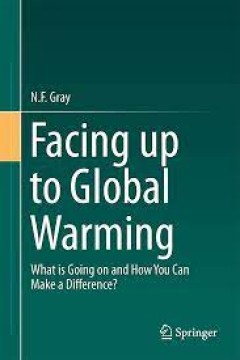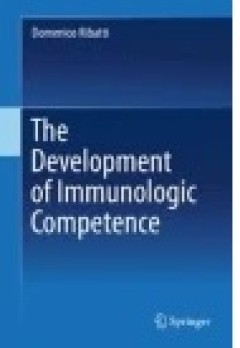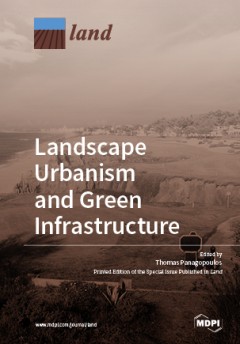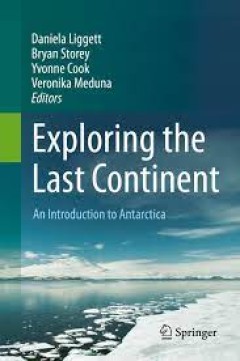Filter by

Facing Up to Global Warming What is Going on and How You Can Make a Difference?
In this volume, Professor N.F. Gray offers a comprehensive primer on climate change, sustainability, and how the two concepts are related. This book consists of fifteen chapters, each treating a specific aspect of the current global crisis, including scientific background as well as an up to date appraisal of the issue at hand. It covers the reasons behind climate change and the effect it will …
- Edition
- -
- ISBN/ISSN
- 978-3-319-20146-7
- Collation
- 28 b/w illustrations, 155 illustrations in colour
- Series Title
- -
- Call Number
- -

The Development of Immunologic Competence
A clear perspective for understanding several diseases and also the entire lymphoid system emerges through the experiments and extensive histopathological studies of patients with primary immunodeficiency diseases that are described in these chapters. Researchers in the life sciences, in biomedicine and the history of medicine will all find something of value in this highly engaging work. It…
- Edition
- -
- ISBN/ISSN
- 978-3-319-24663-5
- Collation
- VIII, 60
- Series Title
- -
- Call Number
- -

Extraterrestrial Intelligence and Human Imagination SETI at the Intersection…
The search for extraterrestrial intelligence (SETI) represents one of the most significant crossroads at which the assumptions and methods of scientific inquiry come into direct contact with—and in many cases conflict with—those of religion. Indeed, at the core of SETI is the same question that motivates many interested in religion: What is the place of humanity in the universe? Both scient…
- Edition
- -
- ISBN/ISSN
- 978-3-319-10551-2
- Collation
- 1 illustrations in colour
- Series Title
- -
- Call Number
- -

British Media Coverage of the Press Reform Debate : Journalists Reporting Jou…
This open access book provides a detailed exploration of the British media coverage of the press reform debate that arose from the News of the World phone hacking scandal and the Leveson Inquiry. Gathering data from a content analysis of 870 news articles, Ogbebor shows how journalists cover debates on media policy and illustrates the impact of their coverage on democracy. Through this analysis…
- Edition
- -
- ISBN/ISSN
- 978-3-030-37265-1
- Collation
- -
- Series Title
- -
- Call Number
- 302.23 OGB b

Landscape Urbanism and Green Infrastructure
This volume examines the applicability of landscape urbanism theory in contemporary landscape architecture practice by bringing together ecology and architecture in the built environment. Using participatory planning of green infrastructure and application of nature-based solutions to address urban challenges, landscape urbanism seeks to reintroduce critical connections between natural and urba…
- Edition
- -
- ISBN/ISSN
- 978-3-03921-370-2
- Collation
- -
- Series Title
- -
- Call Number
- 628 LAN

Advances in Gamma Ray Resonant Scattering and Absorption: Long-Lived Isomeric…
This book presents the basics and advanced topics of research of gamma ray physics. It describes measuring of Fermi surfaces with gamma resonance spectroscopy and the theory of angular distributions of resonantly scattered gamma rays. The dependence of excited-nuclei average lifetime on the shape of the exciting-radiation spectrum and electron binding energies in the spectra of scattered gamma …
- Edition
- Ed. 1
- ISBN/ISSN
- 978-3-319-10524-6
- Collation
- XI, 192
- Series Title
- Springer Tracts in Modern Physics
- Call Number
- 520 DAV a

The Complex Lives of Star Clusters
As with the author’s recent books Extreme Explosions and Under a Crimson Sun, the complex topic of star clusters is broken down and made accessible with clear links to other areas of astronomy in a language which the non-specialist can easily read and enjoy. The full range of topics are addressed regarding how star clusters are formed. Why is it some are dense conglomerates of stars while oth…
- Edition
- -
- ISBN/ISSN
- 978-3-319-14234-0
- Collation
- XV, 343
- Series Title
- Astronomers' Universe
- Call Number
- -

Extragalactic Astronomy and Cosmology An Introduction
This second edition has been updated and substantially expanded. Starting with the description of our home galaxy, the Milky Way, this cogently written textbook introduces the reader to the astronomy of galaxies, their structure, active galactic nuclei, evolution and large scale distribution in the Universe. After an extensive and thorough introduction to modern observational and theoretical co…
- Edition
- -
- ISBN/ISSN
- 978-3-642-54083-7
- Collation
- 191 b/w illustrations, 323 illustrations in colour
- Series Title
- -
- Call Number
- -

Exploring the Last Continent An Introduction to Antarctica
This multi-disciplinary book will cater to students and those who want to have a more critical look behind the scenes of Antarctic science. This book will take a systems approach to providing insights into Antarctic ecosystems and the geophysical environment. Further, the book will link these insights to a discussion of current issues, such as climate change, bio prospecting, environmental mana…
- Edition
- -
- ISBN/ISSN
- 978-3-319-18947-5
- Collation
- IX, 597
- Series Title
- -
- Call Number
- -

The Cnidaria, Past, Present and Future
This volume presents a broad panorama of the current status of research of invertebrate animals considered belonging to the phylum Cnidaria, such as hydra, jellyfish, sea anemone, and coral. In this book the Cnidarians are traced from the Earth’s primordial oceans, to their response to the warming and acidifying oceans. Due to the role of corals in the carbon and calcium cycles, various aspec…
- Edition
- -
- ISBN/ISSN
- 978-3-319-31305-4
- Collation
- XX, 855
- Series Title
- -
- Call Number
- -
 Computer Science, Information & General Works
Computer Science, Information & General Works  Philosophy & Psychology
Philosophy & Psychology  Religion
Religion  Social Sciences
Social Sciences  Language
Language  Pure Science
Pure Science  Applied Sciences
Applied Sciences  Art & Recreation
Art & Recreation  Literature
Literature  History & Geography
History & Geography